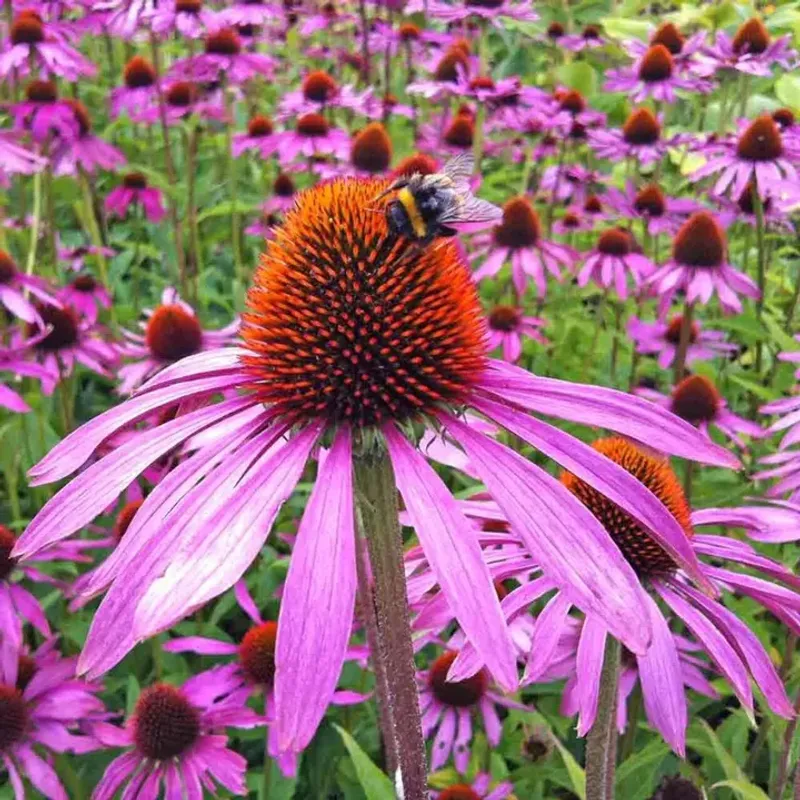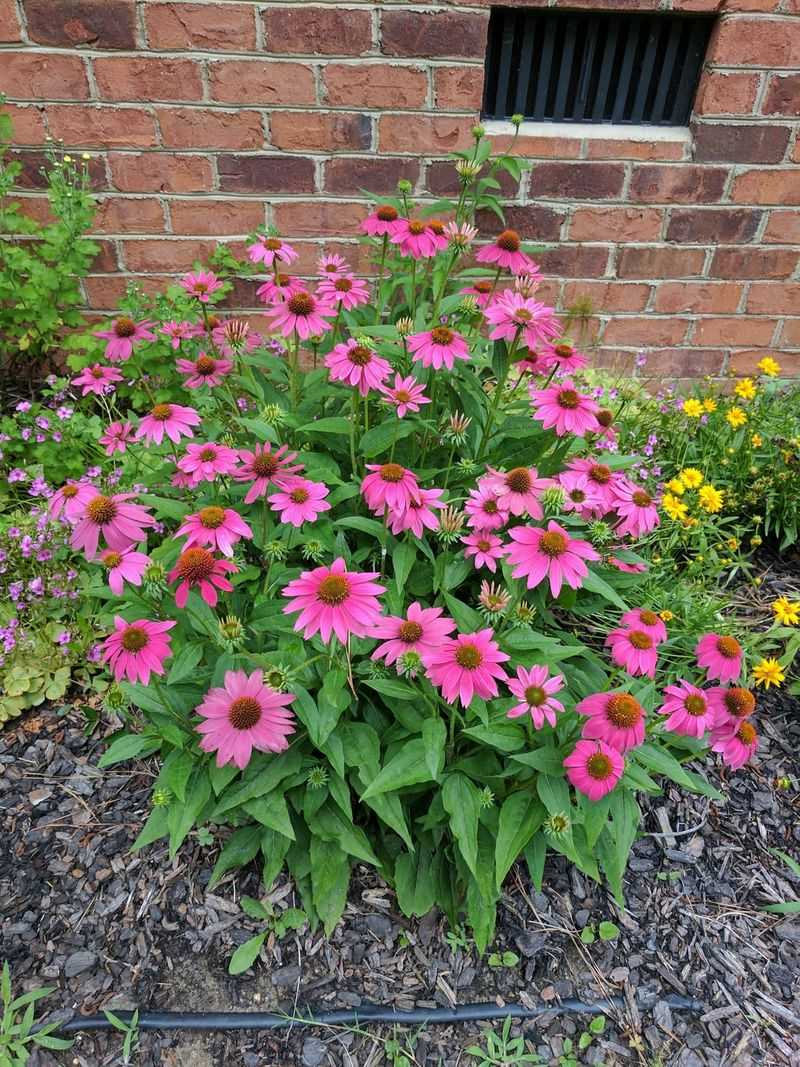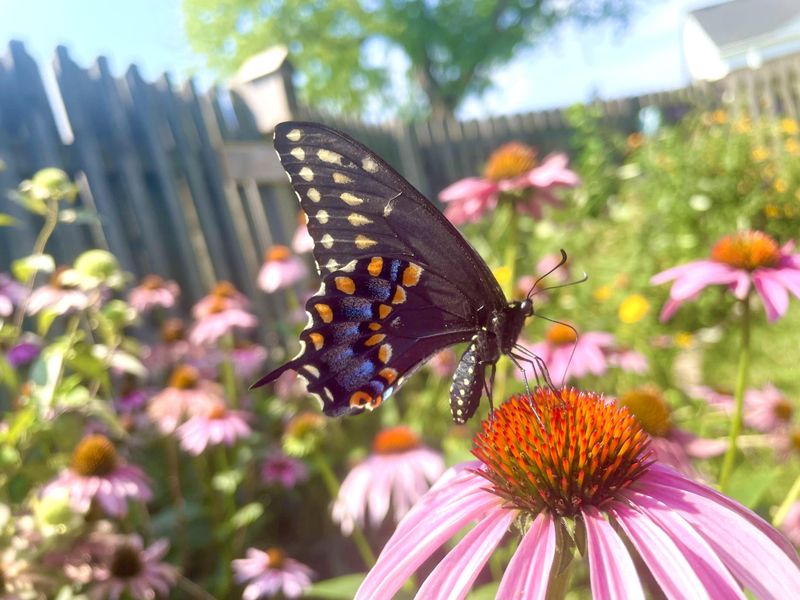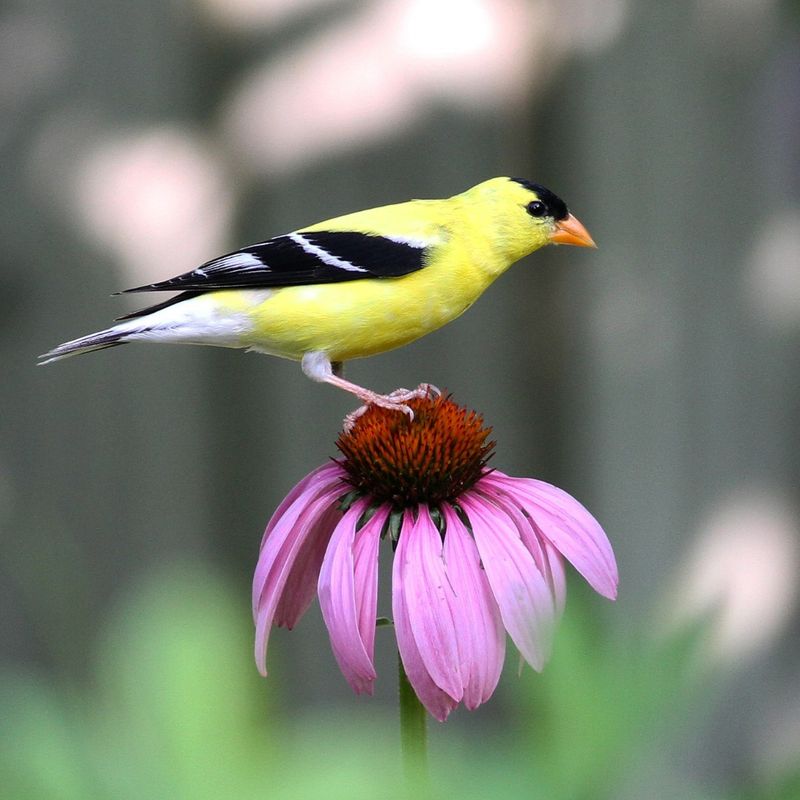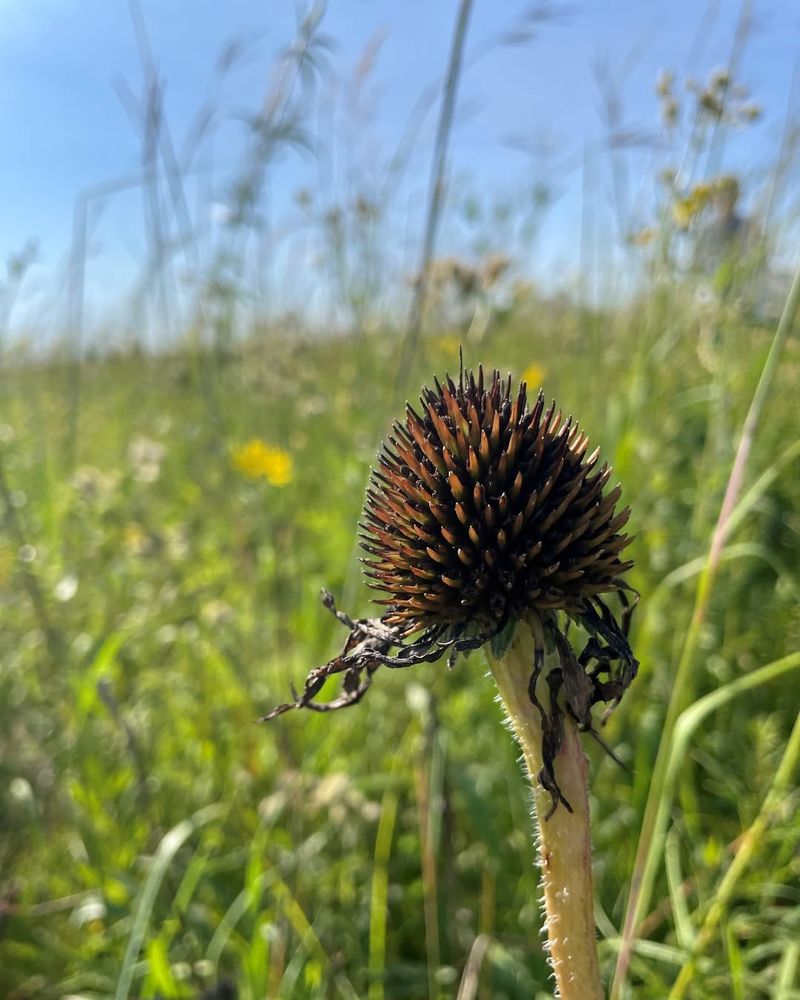Georgia yards display a clear increase in pollinator activity this season. The air holds a steady hum, flower beds show more movement, and gardens feel alive with purpose. A single native plant now draws attention from homeowners and bees alike.
It offers bold color, steady nectar, and reliable performance through heat and sudden rain. The plant anchoring this renewed energy is purple coneflower.
1. Native To North America And Thrives In Georgia
Purple coneflowers originally come from the prairies and woodlands of eastern North America, making them perfectly suited for Georgia’s climate. Unlike imported plants that struggle with local conditions, these flowers have adapted over thousands of years to handle hot summers and unpredictable weather.
Because they’re native, they need less water, fewer pesticides, and minimal fussing once established. Planting natives like purple coneflowers helps restore natural habitats that have disappeared as cities and suburbs expand across Georgia.
2. Bees Can’t Resist The Nectar-Rich Blooms
When purple coneflowers open their petals, bees arrive like customers at a favorite restaurant. The spiky orange center, called the cone, is packed with nectar and pollen that bees absolutely love.
Honeybees, bumblebees, and even native solitary bees visit these flowers throughout the day, collecting food to bring back to their hives. By planting purple coneflowers, you’re basically setting up a buffet that helps bee populations stay strong and healthy, which benefits every garden in your Georgia neighborhood.
3. Blooms Last From Summer Through Fall
Most flowers fade when summer heat arrives, but purple coneflowers keep going strong from June all the way through October. Their long blooming season means bees have a reliable food source even when other plants have stopped flowering.
In fall, when many Georgia gardens look bare and tired, purple coneflowers are still putting on a show with their vibrant purple petals and bold orange centers. Deadheading spent blooms encourages even more flowers, though leaving some helps birds enjoy the seeds later.
4. Incredibly Tough And Drought-Tolerant Once Established
After the first growing season, purple coneflowers develop deep root systems that tap into moisture far below the surface. This superpower means they can survive Georgia’s brutal summer droughts without constant watering or babying.
Their toughness makes them perfect for beginner gardeners or anyone who doesn’t have time for high-maintenance plants. Just give them full sun, decent drainage, and they’ll reward you with beautiful blooms year after year without demanding much attention or care at all.
5. Supports Butterflies And Other Beneficial Insects Too
While bees get most of the attention, purple coneflowers attract an entire community of helpful garden visitors. Butterflies like swallowtails and monarchs stop by for nectar, while beneficial beetles and hoverflies use the flowers as hunting grounds for pests.
Creating habitat for diverse insects means your Georgia garden becomes a balanced ecosystem where nature handles problems naturally. Purple coneflowers act as anchor plants that support this web of life, making your yard healthier and more interesting to observe throughout the seasons.
6. Seeds Provide Winter Food For Goldfinches And Songbirds
When fall turns to winter, those spiky seed heads become essential bird feeders. Goldfinches especially love perching on the sturdy stems and picking out nutritious seeds one by one.
Many Georgia gardeners make the mistake of cutting back all their plants in fall, but leaving purple coneflower stalks standing gives birds much-needed food during cold months when natural sources are scarce. Watching bright yellow goldfinches against snow-dusted seed heads makes winter gardens feel alive and purposeful instead of empty.
7. Easy To Grow From Seeds Or Transplants
Starting purple coneflowers couldn’t be simpler, whether you buy small plants from a nursery or scatter seeds directly in your Georgia garden. Seeds need cold stratification to germinate, so fall planting lets winter naturally prepare them for spring growth.
Transplants give you instant results and will likely bloom their first year, while seeds take patience but cost less and produce more plants. Either way, space them about eighteen inches apart in sunny spots, water regularly until established, and watch them multiply into gorgeous clumps over time.


